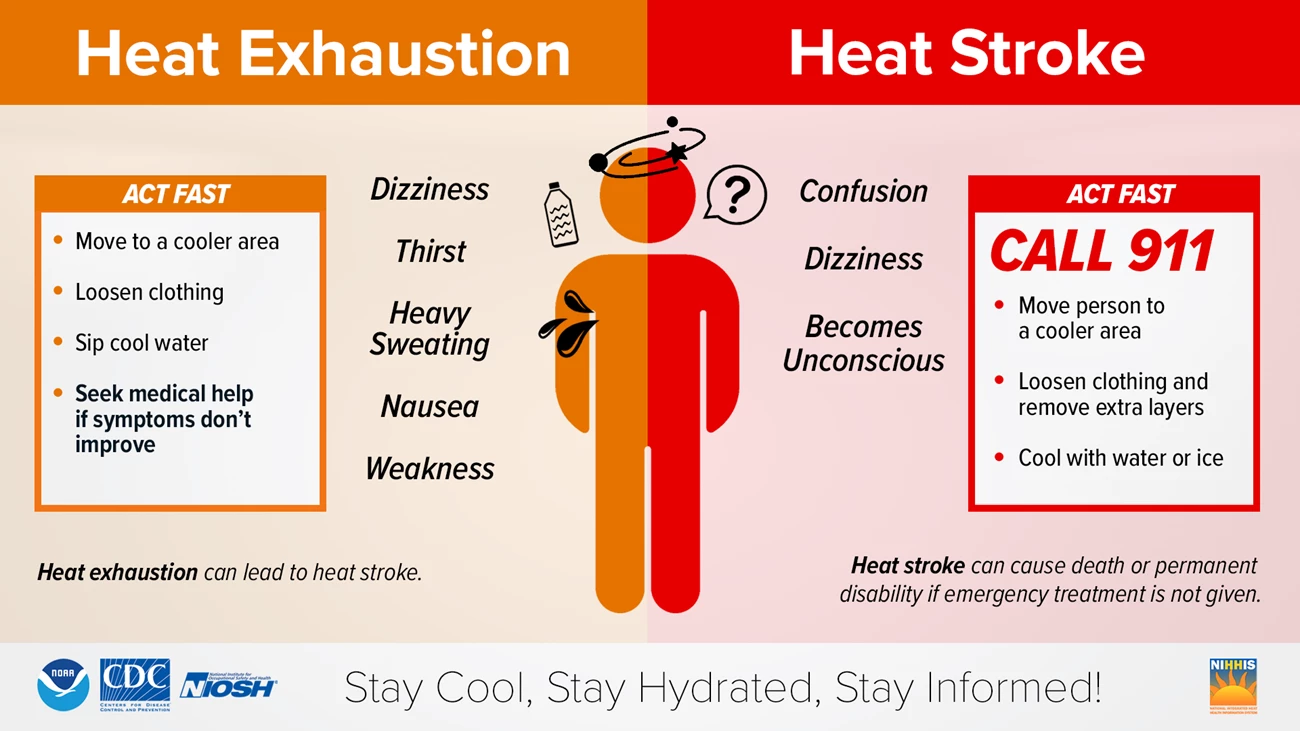
NPS Photo/S.Godin Heading to the beach this summer? Don't let the heat ruin your trip.Heat-related illness can cause symptoms from heat rash to heat stroke. You may need at least a full day of rest to recover or a visit to the hospital. This could ruin your whole trip and we don't want that to happen! What is a Heat-Related Illness?Heat-related illnesses are caused by your body's inability to cool down properly. The body normally cools itself by sweating, but sometimes sweating just isn't enough. When this happens, the body's temperature rises which can lead to brain damage or injure vital organs. Heat-related illnesses range from treatable symptoms, like heat rash and sunburns, to heat stroke which can lead to death if not treated quickly. Does not allow sweat to evaporate as quickly, preventing the body from releasing heat quickly.
Participating in strenuous physical activities, such as hiking, biking, or swimming, in hot weather can make it difficult for your body to cool off, especially you aren’t used to performing the exercise at an extreme temperature.
Plan for the Heat Familiarize yourself with the different types of heat-related illnesses symptoms, and what to do if you experience them.
Visit weather.gov and stop by the visitor center for information on heat alerts and high temperatures expected during your visit. If extreme heat is forecasted, schedule your activity for a cooler part of the day or plan to go out another day.
There are limited water refilling stations for drinking water throughout the park. South Core Banks has a water bottle station at the Light Station Visitor Center. There is also water on the backroad, and near the bathhouse at Great Island Cabin Camp. North Core and Shackleford Banks do not have a potable water.
Pack for the Heat Bring enough water to drink with you for the duration of your trip. If you are camping, we recommend 3 gallons per person, per day. Don't forget to pack water for your pets!
It's important to replace the electrolytes you lose through sweat. Electroltye packets are another good option.
Sunscreen, a hat, and sunglasses to minimize exposure to the sun and prevent damage from UV light.

NPS Photo/S.Godin What to do when experiencing a Heat-Related IllnessCommon symptoms of heat exhaustion include heavy sweating; weakness; and cold, pale, clammy skin. Common symptoms of heat stroke include high body temperature; hot, dry skin; and strong, rapid pulse.More heat safety information is available on NOAA's heat webpage.

NOAA |
Last updated: June 28, 2025
